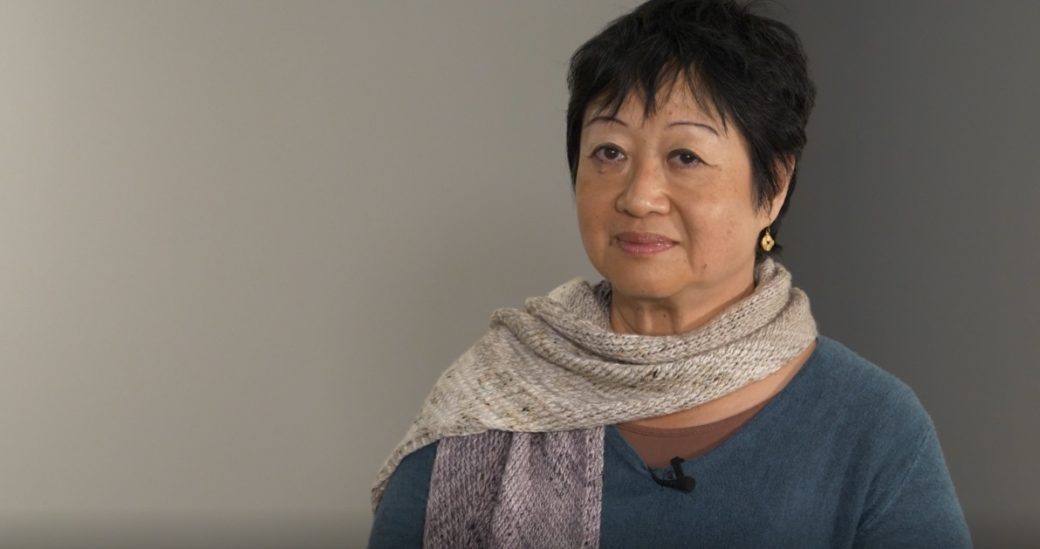
The LA-based architect and exhibition designer on building for people
It takes a lot of people to create an experience like Oklahoma Contemporary’s inaugural Bright Golden Haze. Last month, we took you behind the scenes of our most high-tech show yet. Now we’re flipping the lens, talking to LA-based architect and exhibition designer Annie Chu of Chu+Gooding Architects about how the experts shape the exhibition visitor’s experience.
Chu is a champion of the emerging discipline of interior architecture, helping institutions like Oklahoma Contemporary design spaces with human interaction in mind. She likens her work to sequencing a meal, developing flavors and crafting an experience from amuse-bouche to dessert. “The exhibit experience is moving from course to course,” she said.
With that experience in mind, Chu and her firm’s director of interiors (Karena Auseth) have worked closely with Oklahoma Contemporary’s exhibitions team at to craft a one-of-a-kind experience. During their final consultation before the March 13 grand opening, Chu sat down to talk about her work and the challenges and rewards of designing the optimal space for Bright Golden Haze.
What, exactly, is exhibition design?
It’s about connecting several things. First of all, you have a place — in this case, the gallery at Oklahoma Contemporary Arts Center. And then you have a curator [Jennifer Scanlan], who put together a collection of artwork that tells a story. Then you have the viewers. So we do a bridging between these three aspects: The place, the story of the art, and the experience of the viewer. We help create an environment that actually provides space for the viewer to enjoy the art.
The collaboration between exhibition designers and curators is key. It’s about understanding your story — the curatorial narrative, basically. What is the curator wanting to say with this collection of artwork? We also collaborate on the sequence. What should we see first? How should we see things? What is the viewer going to experience? Then we go back and forth between presenting some way of showing the curator the environment. Sometimes it’s 2-D; sometimes it’s 3-D. And then the curator gives us feedback on how the story should unfold. And then the curator gives us feedback on how the story should unfold.
We do a bridging between three aspects: The place, the story of the art, and the experience of the viewer.
What story is Bright Golden Haze telling?
It starts out very softly. The first work you see is an Olafur Elliasson [Black glass eclipse], which I thought was very smart, because the space itself is made by the light emanating from this art object. It’s a golden light that takes away all colors, and the light makes the space. Then you move slowly through what we’ll call an analog sequence, more traditional work that is hung on walls or made into rooms. Then you move into electronic and digital media. So we start with spatial installations, then further into a release of space, and then an appreciation of the object on the wall, then you go back into these immersive environments — and ultimately to the most immersive environment [Leo Villareal’s Star Ceiling], where you actually have to lay down to experience it.
It’s very much like the sequence of the meal. What you order first influences what you order second, then third. Collectively you synthesize a whole experience, down to what you’re going to drink with it. And you know the sequence. There’s time involved in it. There’s memory from that first appetizer to the second and third course, and you build up a dynamic. You maybe go from lighter to more intense, and then finish however you want to finish. That’s a lot like what you do in exhibit design.
Can you talk about the unique challenges of designing an exhibition that incorporates so much technology?
It’s a very international show, so there’s a translation of the technology that’s behind the walls on some of these digital pieces, and we work with Oklahoma Contemporary’s exhibitions team to help physically install all this work. And some of the technology comes down to understanding lighting, and we’re still tuning these things toward the end. We anticipate and build into the technology. We get the piece sort of working, hopefully, and then when we come into the gallery for that final installation check, we’re still tuning the ambient light to make it the best experience for the viewer — and for the benefit of the piece and how it was intended to be seen.
This exhibition really has a tremendous, broad range. From what you would think of as a traditional art objects on the wall to things like holograms, digital works, lights that are cycling on and off. LED lights, all kinds of different neon lights, video lights coming from a screen. I don’t think we’ve ever worked on a show that has such a broad range. And it befits the title, right? It will all be linked to the concept of light, no matter what — the “bright golden haze.”
More #ThursdayThree:
Camille Utterback, artist
Adrienne Lalli Hills, Studio School associate director
Garrett Colton, visitor experience and retail manager
Return to New Light.









